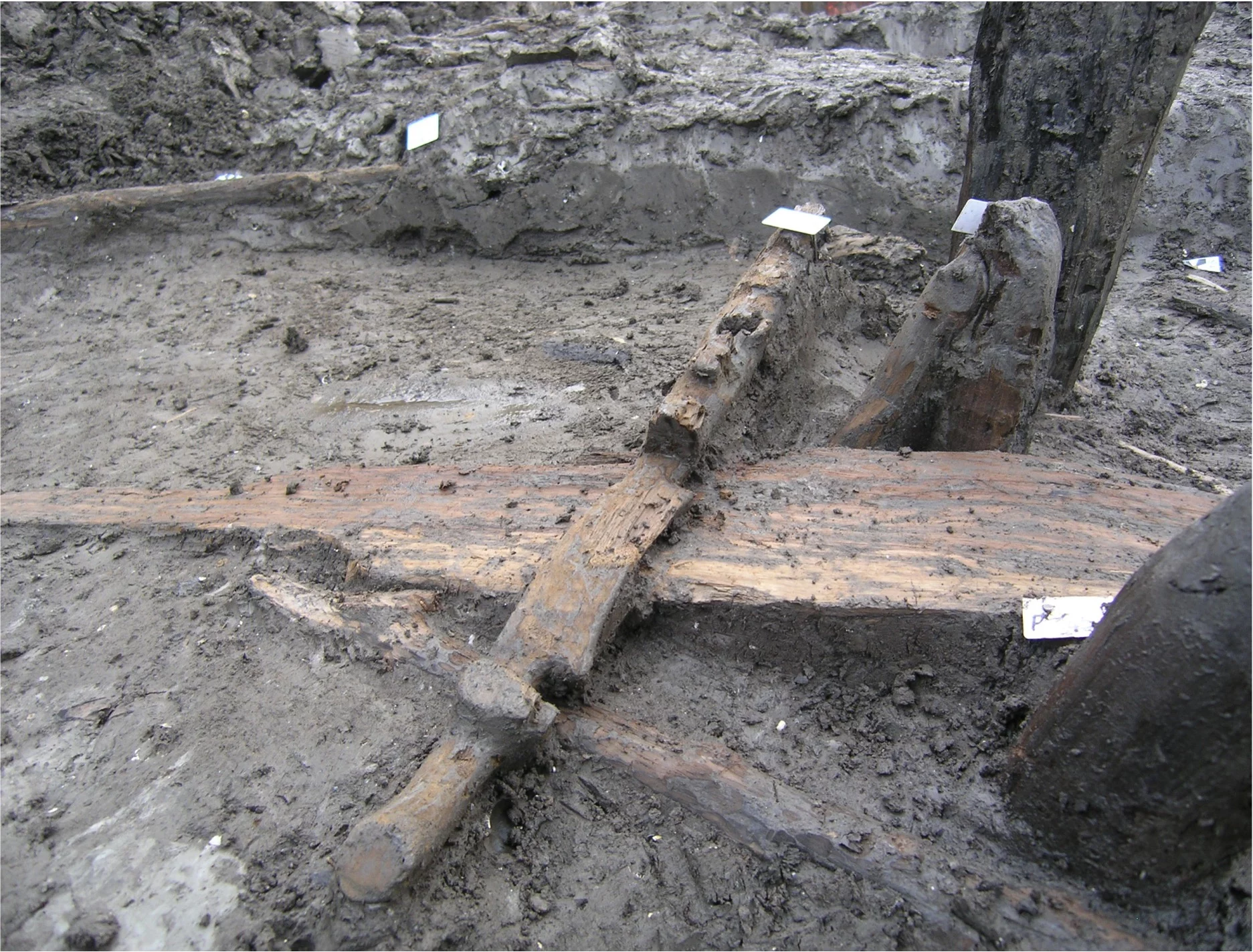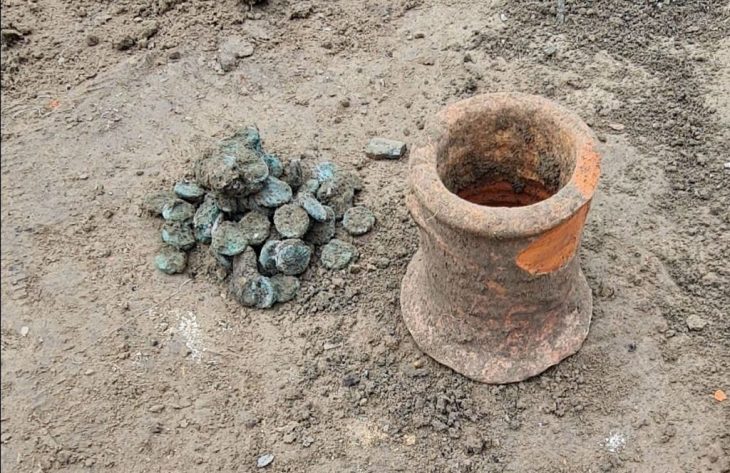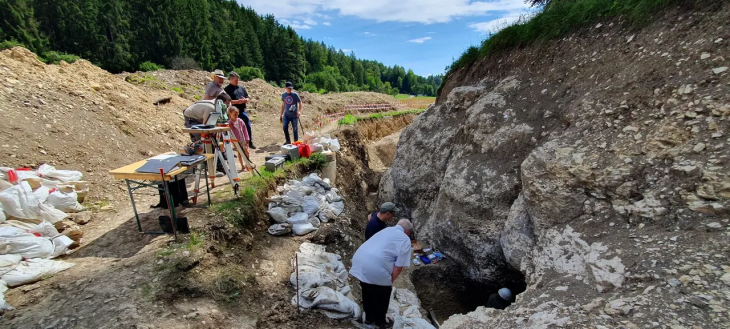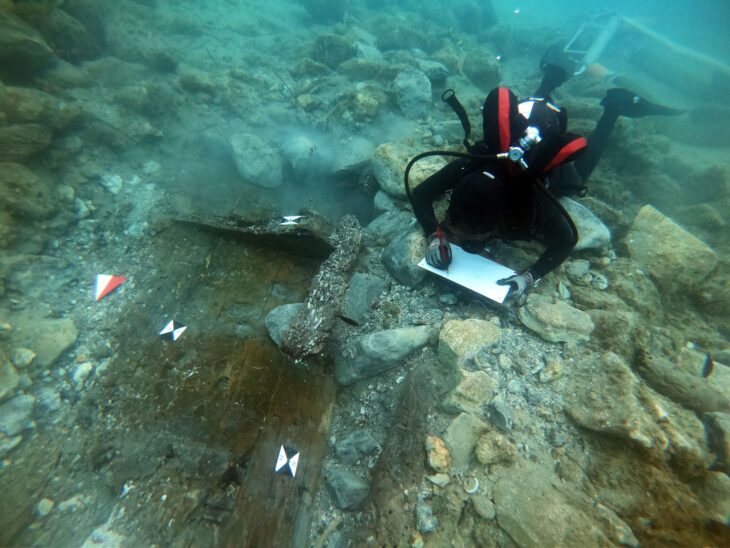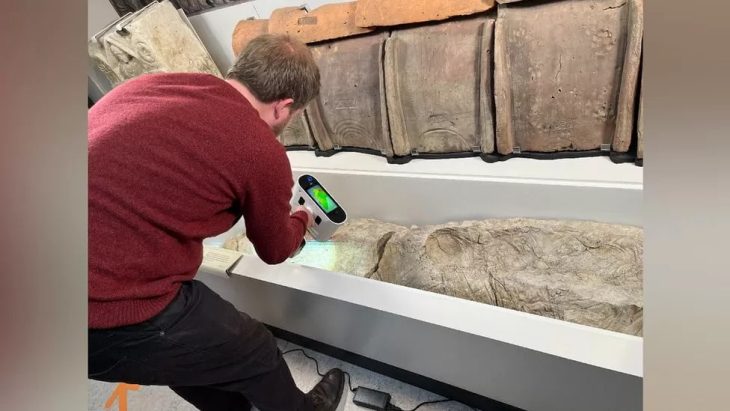After eight years of complex excavation, recovery, and restoration, a rare 3,300-year-old wooden yoke discovered in a Late Bronze Age pile-dwelling settlement in Este, Veneto, northern Italy, has been presented to the public.
The archaeological discovery of a recent Bronze yoke (14th – 13th century BC) from the stilt house in Via Comuna in Este (province of Padua), in 2015, had not received the deserved response. In fact, it took eight years to complete the delicate restoration operations, while the study of the artifact and other materials is still ongoing, involving various scientific professionals. Finally, in 2023, the Padua Superintendency presented – at Palazzo Folco – the wooden finds from the Atestino site.
The discovery occurred during archaeological investigations preliminary to the laying of a section of the SNAM methane pipeline.
The pipeline expansion route has been investigated due to the abundance of archaeological remains in the area; however, the existence of a Bronze Age prehistoric settlement was previously undiscovered. The wooden remains underwent radiocarbon and dendrochronological dating, which showed that the settlement was occupied between the middle of the 13th and middle of the 14th century B.C. Although there have been a few finds from this era made in the Este region before, this is the first instance of a clearly organized Bronze Age settlement.
The yoke is a head yoke, used by attaching it to the neck of a pair of draft animals (probably oxen) and securing it to their horns with leather straps or ropes. Curved cut-outs were made to fit the yoke snugly around the animals’ horns. It was originally estimated to be one meter (3.2 feet long), but about foot of it — the section that was mounted to the second animal of the pair — did not survive the millennia.
This yoke is significantly smaller than early modern yokes, indicating that domesticated bovines in Northern Italy during the Bronze Age were much smaller than they would later become. An ancient repair to one of the teeth in the yoke beam to which the horns were strapped is of particular archaeological interest. The farmer or craftsman must have broken it off while using it, and in order to place a new tooth, they dug out a square hole.
During the Bronze Age, the region was a wetland where people built pile homes over the water. The muddy conditions kept wood and other organic remains intact for thousands of years. Sections of soil were removed en bloc and sent to the Central Institute for Restoration in Rome, where experts in the conservation of wet wood carried out a laborious micro-excavation, PEG treatment, and controlled drying to stabilize the wet wood in a lab setting.
The excavation and conservation is not over yet. There are more wood artifacts to be discovered in the soil blocks and more analysis of the objects that have been stabilized to be done.

